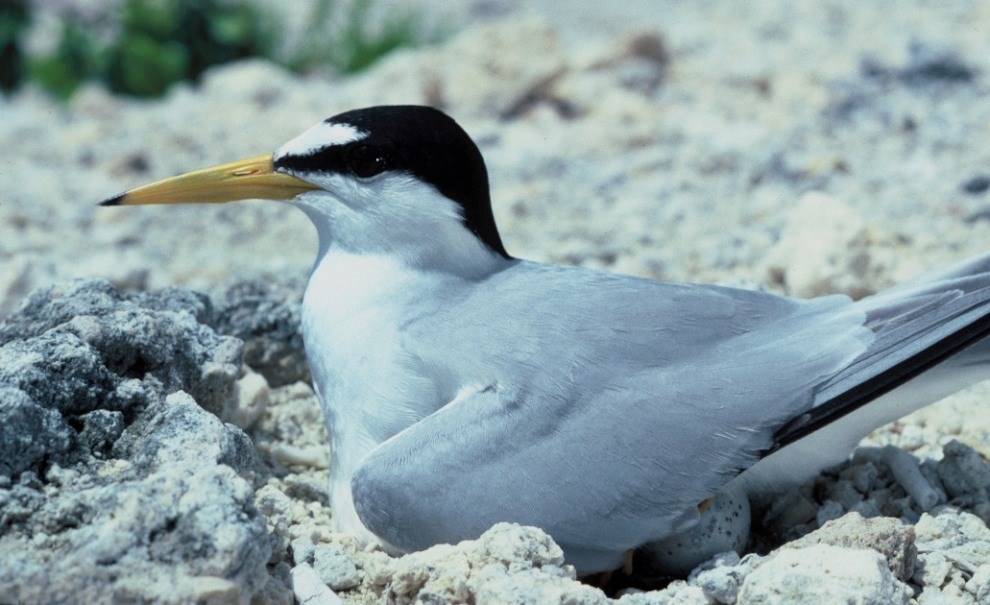Last updated: July 16, 2019
Article
Birds

USFWS photo by S. Maslowski.
Although hurricanes can create habitat for birds (e.g., washover fans for piping plover), the general outlook for birds and hurricanes is not good. Storms are known to destroy nesting habitat, for example of the California least tern (Sternula antillarum browni) during the Great Storm of ‘88, and birds nesting on beaches and on dunes may be especially disturbed by hurricanes because most nest directly on the ground. These habitats are likely to be severely affected by wind and wave action (Gardner et al. 1991). Brackish and freshwater marsh-nesting birds fare somewhat better than dune- and beach-nesting species because marshes are often buffered from tropical storms by dune ridges, and many marsh-nesting species nest above the ground in herbaceous and woody vegetation (Shepherd et al. 1991). Also, hurricanes can kill birds directly, both as a result of excessive wind and rain, and by drowning.
As addressed in the “Coastal Forest” section of this module, large trees typically suffer more damage than small trees. Hence, birds that nest in large trees, especially cavity nesters such as the red-cockaded woodpecker (Picoides borealis), are affected more than those nesting lower in the canopy (Michener et al. 1997). Canopy-nesting birds, for instance bald eagles (Haliaeetus leucocephalus), may fare better because their platform nests are more easily reconstructed, that is, as long as some trees remain available. Hurricane Hugo destroyed 44% of the eagle nests in coastal South Carolina in fall 1989, but by the following spring, 21 of 24 nests had been rebuilt (Cely 1991). By contrast, cavity nests often serve as the “snapping points” of trees during storms. In 1989, Hurricane Hugo heavily impacted the woodpecker population in South Carolina coastal forests.
Birds often get trapped in hurricanes, trying to keep pace with the storm by circling within the eye. Sailors report hundreds of exhausted birds resting on the decks of ships trapped in the eyes of hurricanes (National Weather Service 2009b). Moreover, hurricanes transport birds in the eye of the storm, carrying them far beyond their normal range. As a result, birds can expand their ranges (and alter the community structure in the newly invaded areas) (Thurber 1980). After Hurricane Katrina (2005), scientists examined radar imagery that showed birds scattered throughout the landscape for more than a month after the storm, while up until two days before they were still tightly clustered in bottomland forests (Diehl et al. 2006). Furthermore, birds that are migrating during the hurricane season may avoid coastal landscapes immediately preceding or following major storms; this is a common occurrence during the fall migration period in the North Atlantic and Gulf of Mexico.
